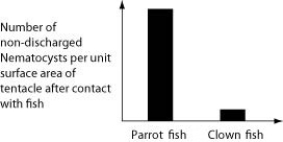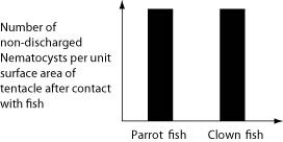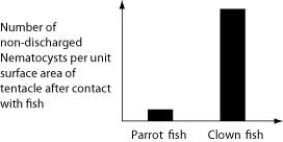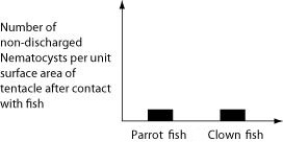Multiple Choice
A primary school science teacher decided to liven up the classroom with a saltwater aquarium. Knowing that saltwater aquaria can be quite a hassle, the teacher proceeded stepwise. First, the teacher conditioned the water. Next, the teacher decided to stock the tank with various marine invertebrates, including a polychaete, a siliceous sponge, several bivalves, a shrimp, several sea anemones of different types, a colonial hydra, a few coral species, an ectoproct, a sea star, and several herbivorous gastropod varieties. Lastly, she added some vertebrates-a parrot fish and a clown fish. She arranged for daily feedings of copepods and feeder fish.
-Normally, the clown fish readily swims among the tentacles of the sea anemones; the parrot fish avoids them. One hypothesis for the clown fish's apparent immunity is that they slowly build a tolerance to the sea anemone's toxin. A second hypothesis is that a chemical in the mucus that coats the clown fish prevents the nematocysts from being triggered. Which of the following graphs supports the second, but not the first, of these hypotheses?
A) 
B) 
C) 
D) 
Correct Answer:

Verified
Correct Answer:
Verified
Q4: In terms of food capture, which sponge
Q17: Use the following information to answer the
Q21: All insects _.<br>A) undergo complete metamorphosis and
Q57: What would be the best anatomical feature
Q58: You find a multi-legged animal in your
Q59: Which phylum is characterised by animals that
Q61: <img src="https://d2lvgg3v3hfg70.cloudfront.net/TB6149/.jpg" alt=" In the figure,
Q62: A farm dam, usually dry during winter,
Q63: A farm dam, usually dry during winter,
Q64: Which of the following statements about bryozoans